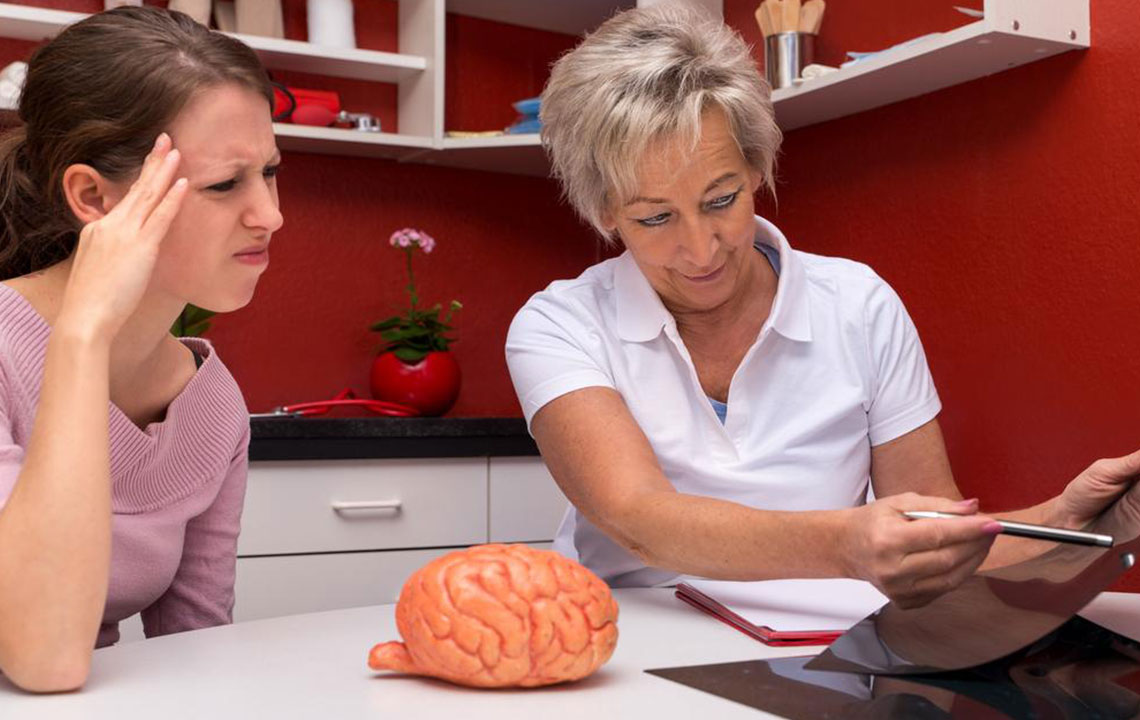Understanding the Causes and Symptoms of Meningitis in Children

Meningitis is an inflammation (swelling) of the protective membranes covering the brain and the spinal cord. It can be a life-threatening condition. Therefore, the case of a person affected by meningitis falls under medical emergencies.
Causes of meningitis
The swelling may be caused due to viral or bacterial infections. However, injuries, cancer, certain drugs, and other types of infections can also cause meningitis. You may catch the infection while sneezing or coughing or kissing.
Bacterial meningitis is a serious illness and can be deadly. It spreads to the brain through nasal mucus and throat secretions. It can build up in over a few hours or several days. In infants, the most common causes are Group B strep, E. coli, and Listeria monocytogenes. Streptococcus pneumoniae (pneumococcus) and Neisseria meningitides (meningococcus) are often the causes of meningitis in adolescents. If left untreated for long, many complications may arise. The possible complications might include the following:
- Loss of hearing
- Epilepsy
- Brain damage
- Renal failure
- Gait issues
- Shock
- Hydrocephalus or fluid buildup and brain swelling
- Myocarditis or inflammation of heart muscles (only if the infection reaches the heart)
These complications can be life-threatening.
Viral meningitis is the most common type of meningitis and is often less severe than bacterial meningitis. There is no report of serious long-term issues associated with viral meningitis. Affected people recover on their own (without any medical treatment). There is no specific treatment for antibiotics do not help treat viral meningitis. However, they are crucial in treating bacterial meningitis.
Viral meningitis is a communicable disease. The meningitis symptoms in children include cold, diarrhea, fever, blisters, sore throat, and influenza. The most common virus that causes viral meningitis is a group known as enteroviruses or common stomach viruses. It can spread among those living in close quarters. Therefore, boarding-school students are at a higher risk of getting infected. If any child has fallen ill and his/her condition is worsening, seek medical care right away.
Understanding meningitis symptoms in children
It is difficult to identify meningitis symptoms in children. The early signs and symptoms of meningitis are similar to those of flu and can be a bit confusing. Meningitis may affect alongside other illness or infection like influenza. It is pivotal to watch out for the key signs and symptoms of meningitis. Once identified, you need to act fast. In the end, it can save a life.
Most common meningitis symptoms in children and adolescents
- Severe headache
- Neck stiffness or rigidity
- Sudden high fever and chills
- Altered consciousness
13 common meningitis symptoms in children and adolescents
- Nausea or vomiting
- Loss of appetite
- Confusion and irritability
- Blotchy skin or red skin rashes (in rare cases like meningococcal meningitis)
- Cold hands and feet
- Sensitivity to bright light
- Fast breathing
- Abnormal change in skin color (pale skin)
- Lack of strength
- Fibromyalgia
- Drowsiness
- Elevated heart rate
- Fear of loud sounds
Sometimes the meningitis symptoms differ in children than in adolescents.
9 common meningitis symptoms in children or infants (older than 1 year)
- High body temperature
- Constant high-pitched or moaning cry
- Wailing when being held
- Slothfulness
- Lack of interest in taking feed (a weak suck)
- Excessive or inadequate sleep
- A swelling in the soft spot on top of the baby’s head or fontanel
- A yellowish tint to the skin (in case of jaundice)
- Neck and body stiffness
It is of utmost importance to consult your doctor if a family member or your co-worker is suffering from meningitis. These symptoms can arise in any sequence or some might not occur at all. Treat the infection by taking medicines prescribed by your doctor.
Diagnosis and medical treatment
Meningitis is diagnosed through a test that requires a small puncture in the lower part of the spinal cord to collect a sample of cerebrospinal fluid (CSF) by inserting a needle. The CSF is then examined in a medical laboratory. You can prevent some forms of meningitis by immunization with the appropriate vaccines. Administering antibiotics is also beneficial in treating bacterial meningitis. Antibiotics and, sometimes, antiviral drugs are the first treatment given in acute meningitis. Use of corticosteroids also to help prevent complications from excessive inflammation.
It is important that the symptoms of meningitis are diagnosed early. Treatment needs to start at the earliest for a speedy recovery. Consult your doctor if you or one of your near ones are experiencing any signs of meningitis.

